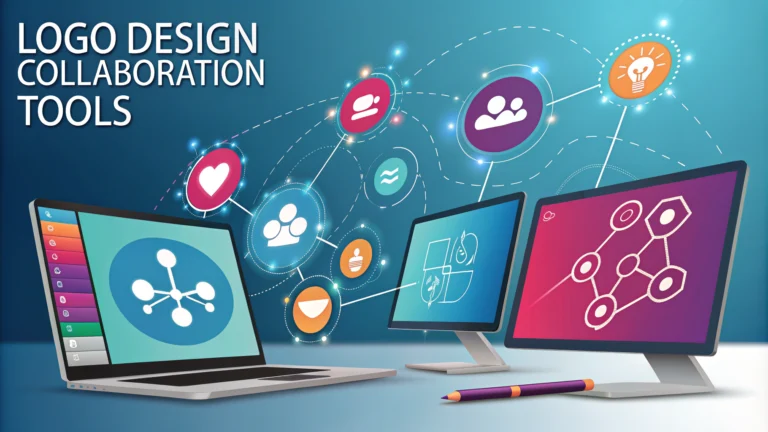Effective collaboration tools have revolutionized logo design workflows, enabling teams to work seamlessly across different locations and time zones.
Popular Logo Design Collaboration Platforms
- Figma – Real-time collaborative design platform with version control and commenting features
- Adobe Creative Cloud – Industry-standard suite with built-in collaboration tools
- Sketch – Mac-based design tool with cloud collaboration capabilities
- InVision – Prototype-focused platform with excellent feedback mechanisms
Key Features to Look For
- Real-time editing capabilities
- Version control and history tracking
- Comment and feedback systems
- File sharing and export options
- Asset management tools
Communication Tools for Logo Design Teams
- Slack – Instant messaging with file sharing capabilities
- Zoom – Video conferencing for real-time design reviews
- Asana – Project management for tracking design milestones
- Miro – Virtual whiteboard for brainstorming sessions
Best Practices for Remote Logo Design Collaboration
- Set clear design guidelines and brand requirements upfront
- Schedule regular check-ins with stakeholders
- Use cloud storage for asset management
- Document feedback and revision requests
- Maintain organized file naming conventions
File Management Solutions
- Dropbox – Cloud storage with version history
- Google Drive – Collaborative storage with easy sharing
- Box – Enterprise-level file management
Feedback and Review Tools
Tools like GoVisually, Red Pen, and Filestage streamline the review process with annotation features and approval workflows.
Version Control Best Practices
- Use clear naming conventions (e.g., Logo_v1.2_Client_Review)
- Maintain a changelog for major revisions
- Archive old versions regularly
- Create separate folders for different design stages
Pricing Considerations
| Tool Type | Monthly Cost Range |
|---|---|
| Design Platforms | $12-50/user |
| Communication Tools | $0-15/user |
| File Storage | $10-25/user |
Contact the software providers directly through their websites for current pricing and enterprise solutions.
Security Considerations
- Implement two-factor authentication
- Use secure file transfer protocols
- Set appropriate access permissions
- Regular backup of design files
- Monitor access logs and activity
Team Training and Onboarding
- Create tool-specific tutorials
- Document workflow procedures
- Establish collaboration guidelines
- Provide access to learning resources
- Regular training sessions for new features
Integration Capabilities
Modern collaboration tools should integrate with:
- Project management software
- Cloud storage solutions
- Communication platforms
- Design software suites
- Client management systems
Mobile Accessibility
- Cross-platform compatibility
- Real-time notifications
- Basic editing capabilities
- Review and approval functions
Conclusion
Effective collaboration tools are essential for modern logo design workflows. Success depends on choosing the right combination of tools that match team needs, establishing clear processes, and maintaining consistent communication channels. Regular evaluation and updates of collaboration systems ensure continued efficiency and quality in logo design projects.
Key Takeaways
- Select tools based on team size and project requirements
- Implement comprehensive security measures
- Maintain clear communication channels
- Regular training and process optimization
- Balance functionality with cost-effectiveness
FAQs
1. What are the best online collaboration tools for logo design teams?
The leading collaboration tools include Figma, Adobe Creative Cloud, Sketch, InVision, and Canva. These platforms offer real-time collaboration features, version control, and sharing capabilities specifically designed for logo design projects.
2. How can multiple designers work on the same logo file simultaneously?
Cloud-based design tools like Figma and Adobe XD allow multiple designers to work on the same file in real-time, with features like live cursors, commenting, and instant updates visible to all team members.
3. What file formats should be used when sharing logo designs with team members?
For collaboration, use editable vector formats like .ai, .eps, or .svg files. Working files can be shared in native formats like .sketch or .fig, while reviews can use web-friendly formats like .pdf or .png.
4. How can feedback be effectively managed in logo design collaboration?
Use tools with built-in annotation features, such as InVision or Figma, where stakeholders can leave specific comments, mark areas for revision, and track feedback threads directly on the design.
5. What security measures should be considered when sharing logo designs online?
Implement password protection, watermarking, and permission controls. Use enterprise-grade collaboration platforms that offer encryption and secure file sharing to protect intellectual property.
6. How can version control be maintained in collaborative logo design?
Utilize tools that automatically save version history, like Adobe Creative Cloud or Figma, which allow teams to track changes, revert to previous versions, and maintain an organized timeline of design iterations.
7. What are essential features for remote logo design collaboration?
Key features include real-time editing, cloud storage, version history, commenting systems, video conferencing integration, and file organization capabilities.
8. How can brand guidelines be effectively shared in collaborative logo design?
Use shared design systems and style guides within collaboration tools, or create digital brand guidelines using platforms like Frontify or Figma to ensure consistent access to color codes, typography, and usage rules.
9. What’s the best way to organize logo design assets in a collaborative environment?
Create structured folders with clear naming conventions, use tags or labels for easy search, and maintain a centralized asset library using tools like Adobe Creative Cloud Libraries or Dropbox.
10. How can client feedback be integrated into collaborative logo design workflows?
Use client-friendly review tools like Invision or Paste by WeTransfer, which allow clients to provide clear feedback without needing design software knowledge, while keeping the feedback organized and actionable for the design team.








